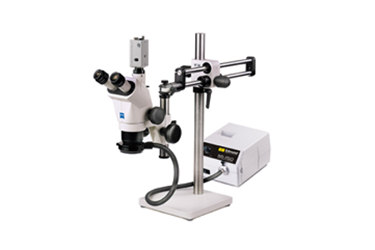Understanding Microscopes And Objectives

A microscope is an optical device used to image an object onto the human eye or a video device. The earliest microscopes, consisting of two elements, simply produced a larger image of an object under inspection than what the human eye could observe. The design has evolved over the microscope's history to now incorporate multiple lenses, filters, polarizers, beamsplitters, sensors, illumination sources, and a host of other components. To understand these complex optical devices, consider a microscope's components, key concepts and specifications, and applications.
Components of Microscopes
A compound microscope is one that contains multiple lens elements. It works similar to a simple magnifier which utilizes a single lens to magnify a small object in order for the human eye to discern its details. With a simple magnifier, the object is placed within the focal length of the single lens. This produces a magnified, virtual image. With a microscope, a relay lens system replaces the single lens; an objective and an eyepiece work in tandem to project the image of the object onto the eye, or a sensor – depending upon the application. There are two parts to a microscope that increase the overall system magnification: the objective and the eyepiece. The objective, located closest to the object, relays a real image of the object to the eyepiece. This part of the microscope is needed to produce the base magnification. The eyepiece, located closest to the eye or sensor, projects and magnifies this real image and yields a virtual image of the object. Eyepieces typically produce an additional 10X magnification, but this can vary from 1X – 30X. Figure 1 illustrates the components of a compound microscope.
Get unlimited access to:
Enter your credentials below to log in. Not yet a member of Photonics Online? Subscribe today.
